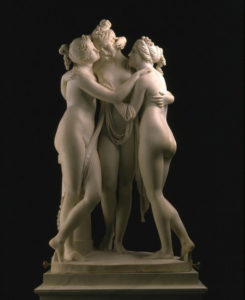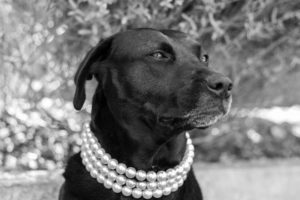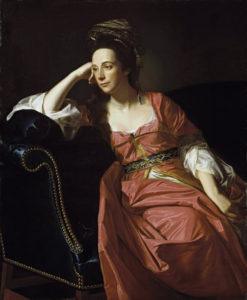|
Issue Five In these turbulent, and history-making times, truth is sometimes a fugitive concept. Right now there are myriad ways to view and interpret current events and issues. Our increasing reliance on social media and online news can deepen our prejudices, allowing us to choose information that bolsters our existing beliefs and refute that which doesn’t. Art can mediate this phenomenon by disassembling conventional notions of truth, enabling us to see another perspective. By learning about and appreciating art in all its forms, across cultures and historic periods, we open ourselves up to new, different, and even at times uncomfortable viewpoints, fostering deeper conversations and greater empathy. Truth need not be only about Beauty but also broadening one’s opinion of each. Helen Lee-Warren |
Sara Turner
MA Museum Studies, 1995
Do you have any lingering memories of your time at The Courtauld?
I lived in a row house on Gower Street, in a residence for overseas students run by an older British couple. They not only provided breakfast, but also gave what amounted to lessons for Americans about how to not come across as Americans and to fit into the English lifestyle.
How did you take advantage of London?
I tried to tick off every museum in London and the UK, using my £60 student travel grants exclusively on train tickets to places like Manchester. I made the most of every day by seeing some museum or collection. I was probably in The National Gallery or The National Portrait Gallery almost every day. I walked everywhere, rarely taking the tube. I also took the Victorian Society Summer School, which brought me to Birmingham. Among my favorites were the Dulwich Picture Gallery, the Queen’s Gallery, and the Geffrye Museum, which is so perfect.
How does your career in art law connect to your studies at The Courtauld?
The link between my current life working at the Department of Justice and The Courtauld isn’t totally illogical. One aspect of my thesis was on Antonio Canova’s Three Graces, and what was deemed as the United Kingdom’s obligation to prevent such national treasures from leaving the country. John Murdoch, the former director of The Courtauld Gallery at that time, connected me with a law professor and I sat in on an art law course. After a Victorian Society internship in London, and a Mellon Internship at the Princeton University Art Museum, I decided to go to law school, where I took a particular interest in crime associated with intellectual property. I applied to the Department of Justice in my final year, but there was a hiring freeze. It was lifted after 9/11, and I joined the US Department of Justice.

What gives you solace in this moment?
A 75-pound Labradormix. We do lots of walking – we go out as soon as the sun is up, trying to beat the dogs and owners who sleep in, so we can have the streets to ourselves. She’s a big dog, and we walk at the same pace. We get into a good rhythm that helps me think about the problems I’m going to face during the day. While we walk, I offer my appreciation for our health, the good weather, and the safety of our neighborhood.  Favorite artist or work of art?
Favorite artist or work of art?
My favorite painting, hands down, is John Singleton Copley’s portrait of Mrs. Thomas Gage (whom I like to think of as Mrs. General Gage), in San Diego’s Timken Museum of Art. The colors are beautiful, the costume magnificent. I feel pride that it was painted by an American, and a bit of glee that General Gage was on the losing side of the colonies’ fight for independence.
What is your favorite museum or collection?

The Huntington Library and Art Collection in Pasadena. We would visit when I was growing up, and my sister and I would view our favorite British paintings and then let loose in the gardens. We ended each visit with a walk down the grand staircase, imagining we were wearing elegant dresses, about to join a fancy party. Locally, there’s no better jewel box of a museum than the Timken. Four rooms – the perfect number of paintings and icons – and each work at an amazing standard.Nowadays I rarely get the chance to spend as much time in museums as I’d like. When I’m in Washington for meetings I’m limited to those that are open past 5.00 pm, so that means the Smithsonian American Art Museum.
Do you have a motto?
When I was applying to Princeton in the late 1980s, its motto was “in the nation’s service.” I found that very inspiring, and I’ve been impressed by all of the careers its famous graduates have had. Ralph Nader was a personal hero of mine, and I thought his work was the embodiment of that motto. The mission of the DOJ continues to inspire me and I’m glad that I’m a part of it.
Sara Turner was born in Pasadena, California. She graduated from Princeton University in 1994, and received an MA in the Art Museum Studies program at The Courtauld Institute of Art. She returned to the States and worked at the Princeton University Art Museum and Princeton University Press. Sara attended law school at Vanderbilt University and finished her law degree at the University of San Diego, attending classes at night while working at the San Diego Museum of Art and then at the Timken Museum of Art. Sara and her husband live in San Diego, where she has worked at the US Department of Justice for more than 18 years.
Previous Postcards:
Deborah Swallow — Märit Rausing Director of The Courtauld
Bill Griswold — Director of the Cleveland Museum of Art
Jason Farago — Art Critic, The New York Times
Joachim Pissarro — Art Historian, Theoretician, and Director of the Hunter College Galleries
Sara Turner — US Department of Justice
Mary Rozell — UBS Art Collection



